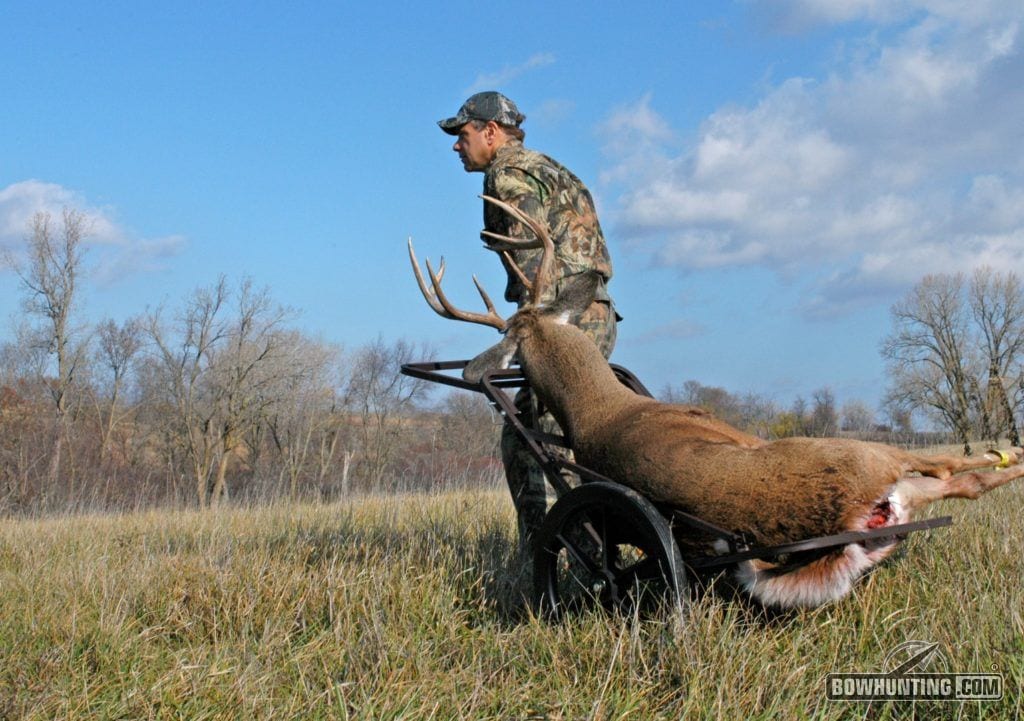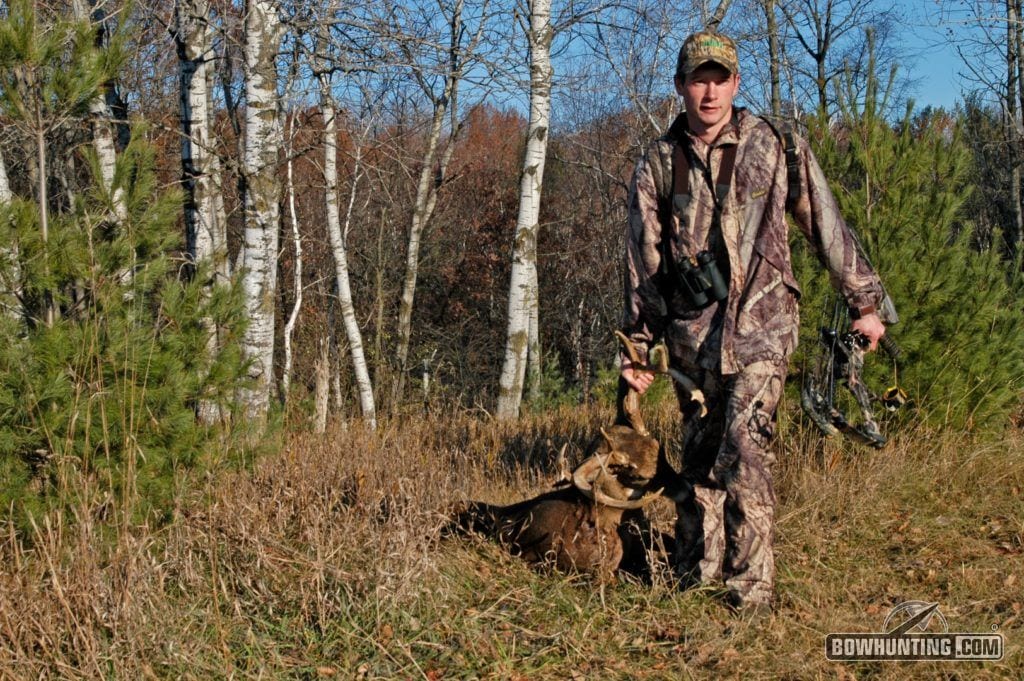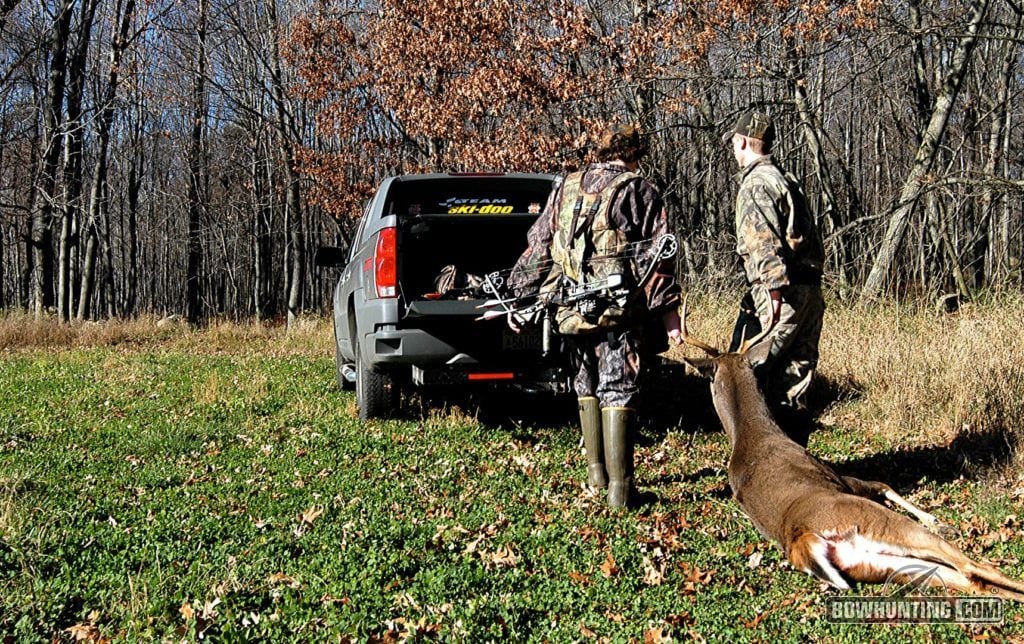Quality Deer Management – Has it helped or hurt our deer populations? These facts show the truth.
While browsing through some old files the other day, I came across a newspaper column I wrote after Wisconsin’s 1997 deer seasons.
The column’s dateline was “Ithaca,” which is in southwestern Wisconsin, and I was reflecting on the previous year’s “earn-a-buck” system. This new regulation required all deer hunters – whether they used bows, rifles or muzzleloaders – to register an antlerless deer before they were allowed to shoot a buck in 1996.
For many hunters, that 1996 deer season provided their first look at the amazing growth potential of white-tailed bucks in farm country, provided they aren’t shot at age 18 months.
As usual, I hunted my uncle’s farm in Richland County several days in 1997, and noticed that the 1996 earn-a-buck regulations spared many bucks, allowing them to reach ages 2-1/2 and 3-1/2. As a result, those bucks grew impressive antlers.

The percentage of 3.5-year-old and older bucks in the harvest is at record highs across whitetail country.
I didn’t think it was coincidence that I saw the biggest buck in my now 30-plus years of hunting my late uncle’s 200 acres during the 1997 season. I also don’t think it’s coincidence that the 1997 season was the first time we saw mature bucks killed not only on my uncle’s farm, but also the neighbors’ adjoining properties to the north and south.
Hunters who participate in quality deer management efforts – passing up yearling bucks while shooting more female deer – regularly see impressive results year after year. As they say, you don’t have to hunt Wisconsin’s Buffalo County to see mature bucks with broad foreheads, blocky builds and massive antlers. Nearly every farming county in Wisconsin – generally the state’s southern two-thirds – also produce quality whitetails if yearling bucks are spared.

Bucks like this are more common today because yearling buck harvest rates are at a record-low 33 percent in whitetail country. A good sign that quality deer management is working well.
Even so, 20 years later, I still hesitate to stand on the stump and try to convert the hunting masses to the quality deer management movement. Why? Because this herd-management strategy seems to keep evolving on its own. I’m not sure it needs people like me acting as if we’re the messiahs of enlightened deer management.
After all, as the Quality Deer Management Association noted in its 2016 annual report, yearling buck harvest rates are at a record overall low in whitetail country, 33 percent; and the percentage of 3.5-year-old and older bucks in the harvest is at a record high. For the first time, every state that collects age data reported that most of their buck harvest was at least 2.5 years old. And in 2014 hunters shot more 3.5-year-old and older bucks than yearling bucks for the first time in recorded history.
Attitudes change at each person’s chosen speed. They won’t be turned by force-feeding. Proponents can’t act as if they’ve been blessed by a vision, and then treat those who disagree as pathetic sponges who simply “need educating.”
But maybe all we’re talking about is a change in perspective. Wisconsin’s deer herd changed more rapidly from the mid-1970s to the mid-1990s than the beliefs and attitudes of the state’s then-650,000 gun-hunters who pursue them for nine short days in November. Anyone who was 40 or older in 1997 remembered when the statewide gun kill seldom surpassed 100,000. We almost universally shot the first deer with antlers because it was likely the only legal deer we would see.
Well, in most regions in the 1990s, there was no need to be so quick to the trigger, although our time in the woods remained brief – perhaps more brief than ever. Even so, Wisconsin hunters combine to kill more than 300,000 deer routinely each fall, and we’ll likely do so again this fall despite fewer hunters and increasingly wider prevalence of chronic wasting disease – which the state discovered in 2002.
Some people I respect still cringe at talk of quality deer management, and worry it will make deer hunting “a rich man’s activity.” When you see how land values can soar in some areas, it’s hard to dismiss their concerns. However, most of agricultural Wisconsin has been privately owned the past 175 years, so access has long been reserved for the landowners’ friends and family. Further, land prices will likely retreat and stabilize as more regions grow big deer, and long-time deer meccas don’t draw disproportionate attention. And if that doesn’t cause lower land prices, perhaps CWD will.

Every state that collects age data on whitetails reported that most of their buck harvest was at least 2.5 years old in 2014.
In 1997 I wrote: “I’m confident quality deer management will become rural Wisconsin’s standard practice before long. After all, its virtues are easily explained and understood, and its results aren’t long in coming. A Wisconsin yearling buck passed in 1997 can reach wall-mounting size for some people by 1998, and record-book proportions by 1999 and 2000.”
I also noted the fun factor of big deer: “When big bucks roam a region, more people talk excitedly about deer. They take more photos, shoot more videotape, and share and compare more notes when visiting their neighbors.”
I closed by writing: “Like it or not, quality deer management is an unstoppable force. Maybe it’s not spreading as fast as its proponents would like, but it will eventually dominate as high deer numbers slowly change opportunistic attitudes.”
Well, I no longer know if QDM remains an unstoppable force. If CWD remains on its current course in Wisconsin, an increasing number of bucks will die of the disease before they get a chance to grow their 3.5- and 4.5-year-old racks. Some parts of southern Wisconsin report 40 percent of adult bucks now carry CWD. Most die within two years once they contract it.
What lies ahead? I no longer make such predictions. I only long for the days when our chief concern was getting more hunters to consider the benefits of a QDM program. Things sure were simpler just 20 years ago.

 By
By 



